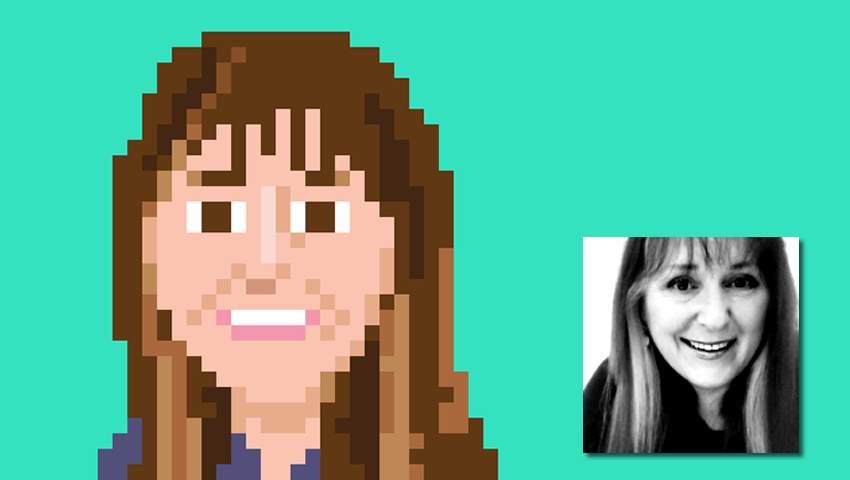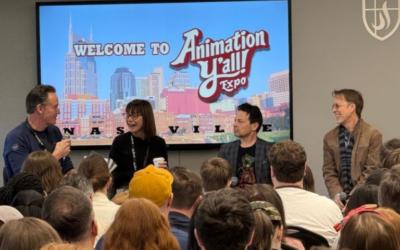Ruth West is both artist and researcher. Her background spans new media, design, virtual and augmented reality, molecular genetics, psychology, participatory mobile and social technologies, and data visualization and sonification. Her work envisions a future in which art and science integration opens new portals of imagination, creative expression, invention, knowledge, and communication across cultures. Ruth directs the xREZ Art + Science Lab and is an associate professor at the University of North Texas. She is the Chair of the SIGGRAPH 2017 Art Papers Program
SIGGRAPH 2017 (S2017): Tell us a little about yourself. What has been your career path and how did you get involved with SIGGRAPH (specifically the Art Papers program)?
Ruth West (RW): I’m an artist – with a twist. I have an extensive background in the sciences and computation, so I blend the arts, technology and sciences in my work. What really interests me is that we are digitizing our world, we are turning nature and culture into digital data which ultimately results in transforming our world. I am really curious to see how the arts can allow us to see things differently and create a whole new experience of ourselves by entering this abstract data space.
I first became involved with SIGGRAPH in 1998 when a friend encouraged me to attend. I was instantly hooked! The SIGGRAPH community really highlights the amazing range of creative abilities that we all share. After my first SIGGRAPH, I become more involved in the community and grew as an artist.
S2017: Can you tell us what the Art Papers program is and why it’s important to computer graphics and interactive techniques?
RW: The Art Papers program is a way for artists to add another dimension to their creative voice. Art Papers is a unique opportunity for artists to put forward their motivation, thought process, inspiration and methodologies behind their work that allows them to make contributions to global culture, to their specific artistic field,castelo inflavel to society, and to the graphics industry. This can open up broader dialogues with scientists, innovators and technologists so we can have conversations to create a shared body of creative knowledge. What most people don’t know is that artists do not just create things that people can see or touch, artists create experiences and think deeply about the motivation behind their work and giving everyone a “sneak peak” behind the “creative scenes” is what Art Papers is about.
S2017: Describe your vision for the 2017 Art Papers Program.
RW: There’s two things. First, Art Papers is very similar to Technical Papers in the fact that there is a long standing tradition and it is important to keep the legacy that allows Art Papers to have value and meaning. Second, for me as Chair, I want to be responsive to where emerging digital culture is moving and to be in conversation with that and allow artists to have a voice in that conversation. I want to recognize the pioneering work of artists who have blazed trails of developing virtual, immersive and augmented technologies. Art Papers will create a more fluid dialogue between a variety of artists and also computer graphic researchers and industry pioneers. We will be building bridges between Art Papers, VR Village, Art Gallery and Technical Papers.
S2017: You’ve decided to create an “Art Papers Award.” Why do you feel it’s important to bring an award into this historic conference program?
RW: Art Papers already recognizes work of artists of high quality and yet writing isn’t the primary thing that artists do. I wanted to open up the opportunity for artists, theorists, historians and researchers to contribute to Art Papers program and dialogue, and be recognized for this form of contribution to our field. This year, we have an inclusive call and at the same time we have a theme of blending the work of pioneering and emerging creators in virtual, augmented and mixed reality. We are excited to recognize the unique contributions of highest excellence in the Art Papers program through the “Art Papers Award.”
S2017: Tell us some other new ideas you are bringing to the SIGGRAPH Art Papers program.
RW: The major idea to be aware of for 2017 is the creation of conversations between pioneering artists, emerging artists and computer graphics industry practitioners. In addition, for 2017, we are inviting a few papers to complement the peer-reviewed papers. The invited papers will connect Art Papers with the broader conference and spark new inspirations for attendees. Another exciting new feature for 2017 is that accepted Art Papers authors will submit a 30 second video summarizing the key contributions of their work that will be featured at the SIGGRAPH Conference for all to view!
S2017: What inspires you as a researcher and/or artist?
RW: For me, my inspiration stems from the way we are digitizing our world, both nature and global culture, as digital data. This is transforming how we see ourselves and our world. I see computation as one of the greatest cultural forces of our time. We act upon data and data acts upon us – it’s a cycle. The digital arts have a significant role to play in creating new experiences that are derived from this data that are radically new and different from experiences we can have otherwise. That’s what drives me – creating these new experiences so we can see ourselves, each other and our world anew. Lastly, it is good to remember that the future is an interdisciplinary world. Everything I do is thinking about how to create new experiences for that new horizon.
Find out more about the SIGGRAPH 2017 Art Papers program! Submissions will be accepted through 30 January 2017.



